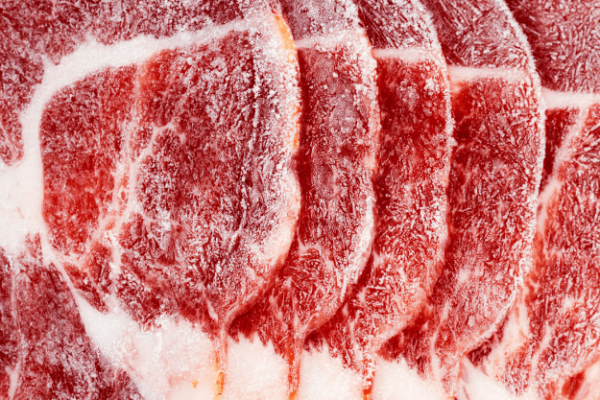How To Eat for a Year on 1 Cow: The 2024 Beef Storage Guide
Believe it or not, 2024 is only days away. While we reflect on the many trials and triumphs 2023 had in store, now is the perfect time to prepare to make 2024 even better. Here at Pease Packing, one of our favorite ways to prepare for the new year is to harvest and store all the meat we’ll need through the seasons to come. Today, we want to share our secrets for year-round feasting with you.
In this comprehensive guide, we’ll dive into the essential steps of getting a whole cow processed, understanding the yield, exploring efficient storage methods, and mastering the art of pacing out meat consumption for a year filled with culinary delights. Then, when 2025 arrives, you’ll be reflecting on money saved and a year of high-quality, homegrown beef.
Getting Started with Beef Processing
How much meat can you anticipate from a single bovine? This question is at the heart of planning your year-long culinary adventure. The yield from a cow can vary based on factors such as the breed, size, and processing preferences. On average, a whole cow can provide anywhere from 400 to 600 pounds of meat. Understanding this not only helps in planning storage but also aids in making informed decisions about the specific cuts you might desire.
From the initial slaughter to the final packaging, each phase plays a crucial role in delivering high-quality, flavorful meat to your table. Processing involves careful butchering, separating the meat into various cuts, and packaging them for preservation. As a USDA slaughterhouse, our team at Pease Packing ensures that each of these steps is done a cut above the competition.
Storing Your Beef Bounty
Now that you have your quality beef processed, the next step is ensuring its preservation for long-term enjoyment. Effective storage is the linchpin in maintaining the freshness and quality of your meat throughout the year.
Freezing Techniques: The cornerstone of beef storage lies in mastering the art of freezing. To properly package your cuts and prevent freezer burn, use airtight containers or vacuum-sealed bags. Then, label the cut and date it was cut to ensure easy retrieval and usage planning.
Tailoring Storage to Cuts: Different cuts have varying optimal storage conditions. For instance, ground beef and stew meat might have a shorter freezer life than steaks and whole roasts. Understanding these nuances ensures each cut maintains its peak quality when it reaches your plate.
By adopting these storage practices, you guarantee that your beef remains a culinary treasure, ready to elevate your meals with its rich flavor and texture. Now, let’s explore the art of pacing out your meat consumption for a satisfying year-round culinary experience.
3 Steps to Pacing Out Meat Consumption
Now that you’ve safeguarded your beef with expert processing and meticulous storage, the key to a year of delicious, nutritious meat lies in pacing out your meat consumption.
1. Practical Portioning
We recommend beginning your planning process by portioning out meals you’ll want. Dividing your meat into meal-sized portions not only streamlines your cooking process but also ensures minimal waste.
2. Meal Planning Strategies:
Plan your meals thoughtfully, incorporating a variety of cuts to keep your culinary experience exciting. Whether it’s the tenderness of filet mignon or the robust flavor of a sirloin, strategic meal planning allows you to savor the diversity of beef throughout the year.
3. Creative Recipes:
Explore creative recipes tailored to different cuts. From savory stews to mouth-watering grills, varying the types of meals you use your meat for will keep you looking forward to every dinner.
By incorporating these strategies into your culinary routine, you can transform your year’s supply of beef into a dynamic and satisfying journey of flavors.
Are you ready to start your journey? Contact Pease Packing for your Kalamazoo beef processing needs, and turn every meal into a celebration of flavor and freshness.



